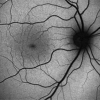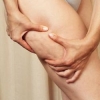Influenza della gravità sul comportamento termico della pelle: studio sperimentale con termografia dinamica a infrarossi
 Per capire meglio il comportamento termomeccanico della pelle e della sua condizione diretta, presentiamo uno studio sperimentale utilizzando la termografia dinamica ad infrarossi. Questo studio sperimentale intende evidenziare quantitativamente alcuni effetti del flusso sanguigno sulla diffusione del calore.
Per capire meglio il comportamento termomeccanico della pelle e della sua condizione diretta, presentiamo uno studio sperimentale utilizzando la termografia dinamica ad infrarossi. Questo studio sperimentale intende evidenziare quantitativamente alcuni effetti del flusso sanguigno sulla diffusione del calore.
Metodi
L'originalità di questa ricerca è stata quella di cambiare il flusso di sangue utilizzando gli effetti della gravità e di quantificare le variazioni di temperatura. La fase sperimentale è consistita nel porre una barra cilindrica di acciaio raffreddato o riscaldato sulla pelle di un avambraccio umano e nel misurare la variazione di temperatura utilizzando una telecamera ad infrarossi. Le misure sono state registrate in diverse posizioni dell'avambraccio.
Risultati e conclusioni
Abbiamo notato molto chiaramente l'influenza della circolazione del sangue nelle vene per quanto riguarda la diffusione della temperatura. Il ritorno all'equilibrio termico è più veloce quando il braccio è in posizione orizzontale. Inoltre, uno studio comparativo di raffreddamento e riscaldamento sperimentale ha mostrato un comportamento termico simmetrico per la pelle sottoposta a questo tipo di sollecitazioni termiche. Questo lavoro ha fornito le condizioni per creare un database che può essere utilizzato nella validazione di modelli termici predittivi della pelle umana.
Fonte:
Titolo: Influence of gravity on the skin thermal behavior: experimental study using dynamic infrared thermography
Rivista: Skin Research and Technology. doi: 10.1111/j.1600-0846.2012.00657.x
Autori: Domoina Ratovoson, Franck Jourdan, Vincent Huon
Affiliazioni: Laboratory of Mechanics and Civil Engineering, CNRS, University Montpellier 2, France
Abstract:
Background/aim
To better understand the thermomechanical behavior of the skin and its direct environment, we present an experimental study using dynamic infrared thermography. This experimental study aims to highlight quantitatively some effects of blood flow on the heat diffusion.
Methods
The originality of this research was to change the blood flow by using effects of gravity and to quantify the temperature changes. The experimental step consists of putting a cylindrical steel bar cooled or warmed on the skin of a human forearm and to measure the change of the temperature using an infrared camera. Measures have been recorded for different positions of the forearm.
Result and conclusion
We noted very clearly the influence of blood circulation in the veins on the diffusion of the temperature. The return to thermal balance is faster when the arm is in a horizontal position. Moreover, a comparative study of experimental cooling and warming showed a symmetrical thermal behavior for the skin under this type of thermal solicitations. This work provided to build a database that can be used for the validation of predictive thermal models of human skin.





